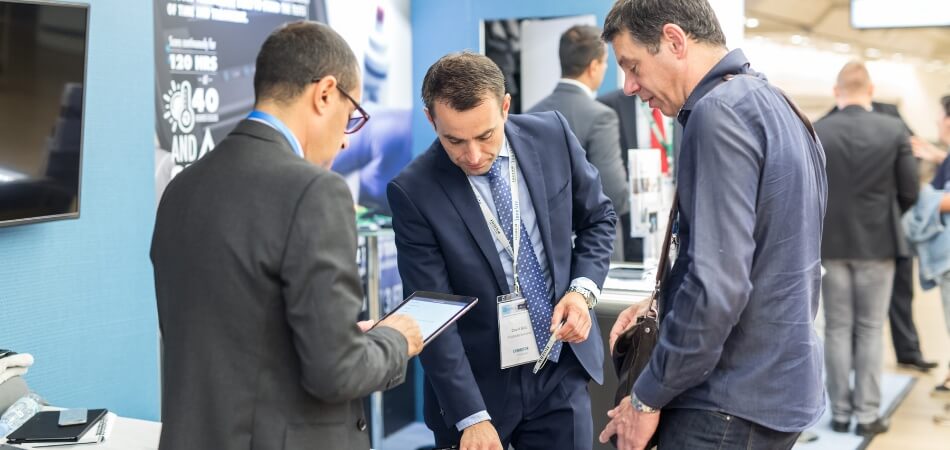Trade shows are golden opportunities for business growth. Attendees explore new products, share ideas, and connect. But the real value lies in the leads you collect potential customers interested in your offerings.. So, what to do with leads after a trade show?
After a trade show, follow up with leads through personalized emails and calls. Provide additional information and nurture them through your sales process for increased conversion rates.
In this article, we’ll guide you through the post-trade show journey, helping you transform those fleeting connections into long-lasting business relationships. Whether you’re a seasoned trade show exhibitor or a first-timer, these insights will help you make the most of your trade show leads and ultimately boost your bottom line.
What are Trade Show Leads?
Trade show leads are prospective customers or contacts gathered during trade show events. Exhibitors collect contact information and other relevant details to initiate post-show engagement. These leads express interest in products or services offered at the trade show and represent potential opportunities for businesses to convert them into loyal customers.

Trade show leads serve as a crucial resource for businesses. They provide a pool of prospects who have demonstrated an active interest in a company’s offerings by visiting their booth and engaging in conversations. Effective management of these leads involves prompt follow-up, personalized communication, and strategic nurturing to guide them through the sales funnel.
Ultimately, trade show leads can significantly impact a company’s success. By capitalizing on the connections made during trade shows and employing effective post-event strategies, businesses can convert these leads into paying customers, drive revenue growth, and expand their market reach. Properly handling and nurturing trade show leads can be the key to unlocking the full potential of these valuable opportunities.
The Importance of Trade Show Leads
Trade show leads are the lifeblood of business growth, representing individuals or organizations interested in your products or services after a trade show event. These leads hold significant importance in several key aspects:
Immediate Sales Potential
Trade show leads, often in the form of warm prospects, are more likely to convert quickly due to their demonstrated interest during the event. Their swift conversion can provide a boost in revenue shortly after the trade show, making them a valuable resource for short-term sales growth.
Market Expansion and Diversification
Engaging with a diverse range of trade show attendees, including those from different geographical locations and industries, can broaden your market horizons. This expansion creates new opportunities for growth by tapping into previously untapped customer segments.
Networking and Industry Insights
In addition to potential customers, trade shows offer the chance to network with industry peers. These connections can provide valuable insights, foster partnerships, and lead to collaborations that benefit your business in future endeavors.
Feedback for Product Development
Engaging with trade show leads post-event allows you to collect valuable feedback. Their input can serve as a foundation for product or service improvements, ensuring that your offerings align more closely with customer preferences and market demands.
Boosting Brand Visibility and Reputation
Proactive follow-up with trade show leads reinforces your brand’s visibility and reputation. Timely and personalized interactions leave a positive impression, strengthening your presence in the market and enhancing your brand’s image.
Long-Term Relationship Building
Beyond immediate sales, nurturing trade show leads enables the establishment of long-term relationships. Even if they don’t convert right away, ongoing engagement can gradually transform them into loyal, repeat customers, providing sustained revenue over time.
What to Do With Leads After a Trade Show?
Trade shows are bustling hubs of opportunity, but their true value lies beyond the event. It’s in the follow-up, in understanding what to do with leads after a trade show. Here’s a strategic roadmap:

Prompt Follow-Up for Lasting Impressions
Swiftly reach out to your leads with personalized emails and calls to not only express gratitude but also to outline the next steps in your engagement, leaving a lasting positive impression that demonstrates your commitment to their needs.
Effective Lead Categorization for Tailored Outreach
Segment leads based on their readiness to buy or engage, allowing for customized follow-up strategies that cater to the specific needs and interests of each group. This ensures that your communications resonate with them on a deeper level.
Nurture Through Valuable Content
Provide educational content that addresses their pain points and guides them through the buyer’s journey. By nurturing their interest with informative resources, you can position your brand as a trusted resource and build credibility.
Customized Engagement for Higher Conversions
Tailor your engagement approach to each lead’s preferences and behaviors. Offering personalized solutions and information at the right time can significantly increase conversion rates and show that you understand their unique needs.
Strategies for Effective Conversion
Develop a comprehensive plan for converting leads into paying customers, considering their unique needs, objections, and decision-making processes. This involves crafting persuasive messages and offers that resonate with each lead.
Track and Analyze for Continuous Improvement
Regularly monitor key performance indicators (KPIs) to evaluate the success of your lead management efforts. This data-driven approach allows for ongoing optimization and refinement, ensuring that your strategies evolve with changing market dynamics.
Pro Tips for Trade Show Veterans
Advanced techniques and strategies for seasoned exhibitors to maximize the value of their existing connections and leads, including tactics for upselling, cross-selling, and leveraging long-standing relationships for mutual benefit.
Long-Term Relationship Building for Sustained Success
Focus on maintaining relationships beyond the initial conversion. Turning satisfied customers into brand advocates can lead to ongoing business growth and referrals, contributing to your company’s long-term success and reputation.
Tips for First-Time Exhibitors
If you’re a first-time exhibitor at a trade show, it’s an exciting opportunity to showcase your brand. However, it can also be a bit overwhelming. Here are some practical tips to help you make the most of your first trade show experience:
- Booth Design: Invest in an eye-catching booth design that reflects your brand and attracts visitors to your space. Ensure it’s visually appealing and aligns with your messaging.
- Engaging Displays: Create interactive displays or demos that effectively showcase your products or services. Make it easy for attendees to understand what you offer.
- Well-Trained Staff: Ensure your booth staff is knowledgeable, approachable, and well-prepared to engage with attendees. They should be able to answer questions and represent your brand effectively.
- Clear Messaging: Craft a concise and compelling message that communicates your unique value proposition. Attendees should understand what sets your business apart.
- Lead Capture: Implement a system to capture and organize leads efficiently, such as digital lead retrieval tools or lead forms. This ensures you can follow up with potential customers effectively.
- Networking: Actively network with fellow exhibitors to build industry connections and share insights. Collaborative relationships can lead to valuable opportunities.
- Promotions: Offer exclusive trade show promotions or discounts to incentivize purchases. Providing an incentive can encourage attendees to make decisions on the spot.
- Follow-Up Plan: Develop a post-show follow-up strategy to nurture leads and convert them into customers. Timely and personalized follow-up is key to reaping the benefits of your trade show participation.
These tips will help first-time exhibitors make a strong impression and maximize their trade show experience.
Crisis Management and Emergency Plans for Exhibitors in Trade Shows
Participating in trade shows can be a rewarding experience, but it’s essential to be prepared for unexpected challenges. From technical glitches to health and safety concerns, exhibitors must have robust crisis management and emergency plans in place to ensure the event’s success and safety.

Pre-Event Risk Assessment
Before the trade show, conduct a comprehensive risk assessment to identify potential issues, such as technical difficulties, weather-related disruptions, or health and safety concerns. Understanding these risks is the first step in effective crisis management.
Emergency Contact Information
Create a detailed list of essential contacts, including venue staff, emergency services, and your own team members. Ensure that everyone involved has easy access to this information, facilitating quick communication in case of an emergency.
Communication Protocols
Establish clear communication protocols within your team to manage crises efficiently. Assign specific roles and responsibilities so that everyone knows their tasks when a crisis arises. Effective communication is crucial for a coordinated response.
Contingency Plans
Develop contingency plans for common crises that may arise during the trade show. For instance, if your booth encounters technical issues, have backup equipment readily available to minimize downtime.
Evacuation Procedures
Familiarize your team with the venue’s evacuation procedures, including exit routes and designated assembly points. This knowledge is vital in the event of emergencies such as fires or other immediate threats.
Emergency Supplies
Maintain an emergency supply kit stocked with essential items like first-aid supplies, flashlights, basic tools, and any specific items relevant to your booth’s operation. Being prepared with these supplies can help you handle minor crises more effectively.
Bottom Line
Trade shows are not just about the event itself; they are a gateway to valuable leads and long-lasting business relationships. “What to do with leads after a trade show?” is a question that every exhibitor should address. The articles provided a comprehensive guide, from prompt follow-up and personalized engagement to effective lead categorization and customized strategies for conversion. It point up the significance of trade show leads as a source of immediate sales potential, market expansion, industry networking, feedback for product development, brand visibility, and long-term relationship building.
Additionally, the importance of crisis management and emergency foresight was highlighted, ensuring exhibitors are equipped to handle unforeseen challenges effectively. Whether you’re a first-time exhibitor or a seasoned pro, these insights serve as a valuable resource to help you maximize the benefits of your trade show participation.


